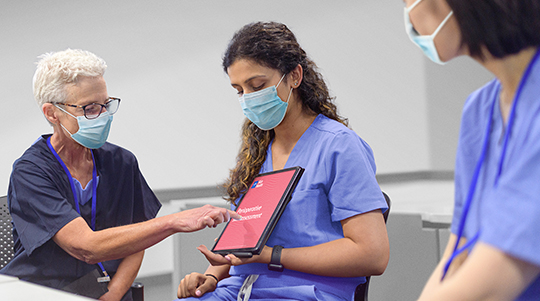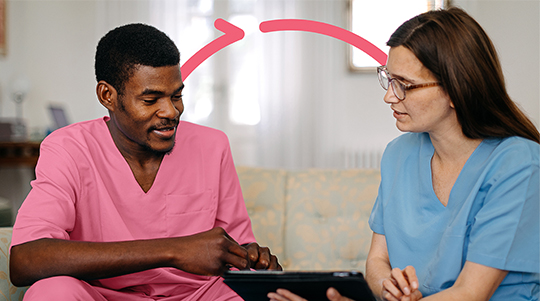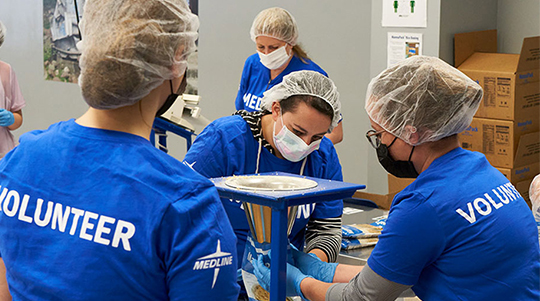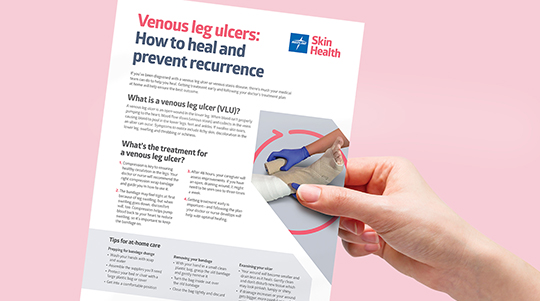How do social determinants of health affect wound healing?
5 ways to help identify and address healthcare disparities.
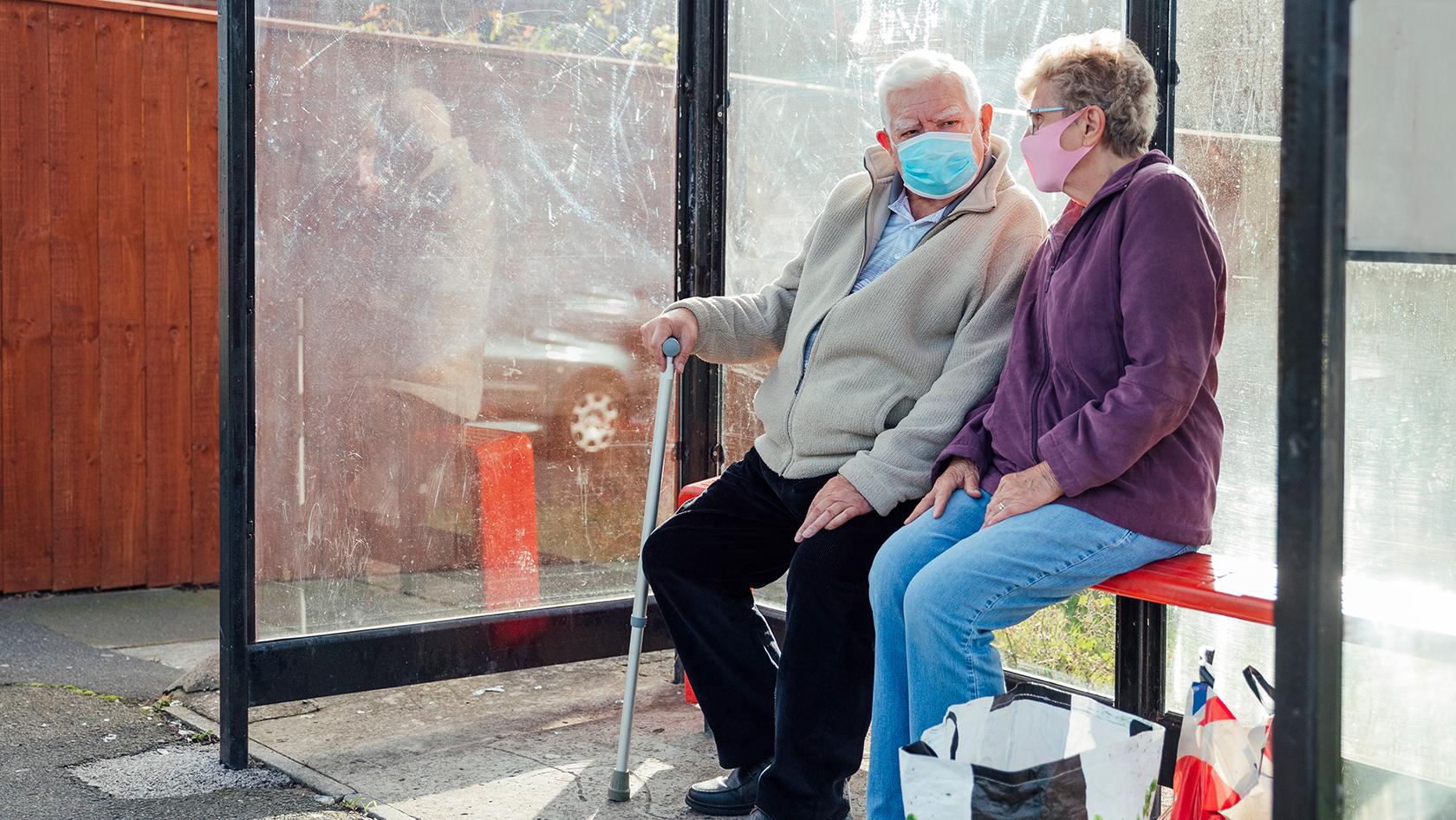
Some of the most significant factors affecting acute and chronic wound outcomes come from outside of your direct care. We’re talking about the social determinants of health.
The U.S. Department of Health and Human Services defines the social determinants of health (SDOH) as “the conditions in the environments where people are born, live, learn, work, play, worship and age that affect a wide range of health, functioning, and quality-of-life outcomes and risks.”1
Social determinants of health play a large part in health outcomes.3
Research has shown that adverse SDOH can affect an individual’s biology and ultimately contribute to disease development, slower wound healing and lower life expectancy.2 In fact, it’s been shown that social determinants of health play a large part in health outcomes overall.3
The good news is clinicians are now being encouraged to use the assigned ICD-10 CM Z codes to document SDOH data. Employing a standardized approach to screening for documenting and coding social needs enables hospitals and other providers to track and develop strategies to address the social needs that impact their patients.
How to address SDOH in your practice and help patients heal
How can skin and wound care teams help reduce the effects of social determinants of health when it comes to preventing and treating pressure injuries, venous leg ulcers, diabetic foot ulcers and other skin breakdown? In this article, we dig into what SDOH means for your patients and residents and suggest 5 ways to help improve wound outcomes.
1
Consider food security as part of wound healing
Did you know that 11% of the country’s households experience food insecurity? Combined with an unhealthy diet, food insecurity directly correlates to a higher risk of chronic diseases such as diabetes, high blood pressure and obesity, all of which can have a detrimental influence on wound healing.4 That’s why it’s important that a patient’s nutritional needs are met.
11%
of households experience food insecurity4
“We are what we eat,” emphasizes Lawrence B. Harkless, DPM, FACFAS, MAPWCA, interim dean of the UTRGV School of Podiatric Medicine. “If you don’t have healthy foods at your neighborhood grocery store, and it’s not safe for you to walk to a different neighborhood, you’re often left with fast food.”
This is most acute in Black communities, which have the fewest supermarkets.5 Studies show that people who live in predominantly Black neighborhoods in Chicago, for example, have fast food restaurants within a third of a mile, but would need to travel twice as far to get to a grocery store. 6 These people are stuck in what’s been dubbed a “food desert.”
“If you don’t have healthy foods at your neighborhood grocery store, and it’s not safe for you to walk to a different neighborhood, you’re often left with fast food.”

Lawrence B. Harkless
DPM, FACFAS, MAPWCA
Food deserts occur when there’s a lack of access to affordable fruits, vegetables, whole grains, low fat milk and other nutritional options. But the official classification considers a small corner store on par with a major grocery chain, despite the fact that corner stores typically carry mostly processed and preserved items.4
To help uncover if your wound patients have limited access to healthy foods, Margaret Halstead, Medline Vice President of Health Economics and
Market Access, suggests asking your patients questions that can help determine if a food referral or other resources are warranted. Start with these:
- What do you like about where you shop for food?
- What time of day do you usually do your shopping and why that time?
- How’s the selection of fruits and vegetables where you shop?
- If you don’t buy a lot of fruits and vegetables, why not?
In addition, the American Hospital Association recommends a few strategies, including:4
- Incorporate screening questions to determine food insecurity in electronic health records
- Provide prescriptions for healthy food
- Develop an on-site food bank or partner with a local food bank
- Invest in mobile food bank trucks
- Advocate at the city and state level to increase access to healthy foods
Partnering to help end food insecurity
As part of a commitment to make healthcare run better, Medline supports programs that mitigate health disparities. For example, in 2021, Medline volunteers contributed more than 500 pounds of food to a local food pantry. Read more about our partnerships that help reduce food insecurity and other social determinants of health.
2
Get to know your patient’s past and present circumstances
You may have heard of the CDC-Kaiser Permanente Adverse Childhood Experiences (ACE) study. It lays out 10 aspects of childhood—such as physical abuse, sexual abuse and someone in the home who has been incarcerated—that may increase a person’s chance of chronic disease later in life. “Physicians can’t write a prescription to change these, but they can ask the questions to understand them,” says Dr. Harkless. “It takes some care, concern and commitment and an understanding of the community you’re serving.”
“It takes some care, concern and commitment and an understanding of the community you’re serving.”
Lawrence B. Harkless
DPM, FACFAS, MAPWCA
There may be numerous reasons why the ACE factors affect later disease development, but one thing is clear: More ACE factors lead to higher stress, which is known to delay wound healing.7
One study recruited couples who were deliberately given a blister wound, then were divided into two groups: One group of couples was told to discuss marital conflicts and the other to perform a social support task. The wounds of the couples involved in marital conflict discussions healed “significantly slower” than those who participated in the social support task. 7
Another source of stress goes back to the issue of food insecurity. A lack of access to healthy food can raise a person’s stress levels to a point that it causes biological changes that can contribute to obesity,8 making it even harder to lose weight. Thus, a vicious circle develops for people who may already be diagnosed or prone to diabetes.
3
Uncover competing priorities that might impede wound progress
Some barriers to wound healing are subtle. One study of patients with venous leg ulcers revealed that characteristics such as being single, lower social class and having lack of central heating in their home were associated with longer healing times.7
“If you have a chronic disease, it becomes really critical that you have stable housing in order for you to even be able to focus on managing your disease.”

Margaret Halstead
Medline Vice President of Health Economics and Market Access
Halstead also points out that when people are worried about where their next meal is coming from and how to pay their rent, they may de-prioritize follow-up wound management appointments and neglect self-care. “If you have a chronic disease, it becomes really critical that you have stable housing in order for you to even be able to focus on managing your disease,” she says.
Whenever possible, connect your patients with resources that can help alleviate some of your patients’ essential needs. Halstead recommends a website called findhelp.org, which lists support services by ZIP code.
4
Remember people may face a transportation burden
Out of necessity and fast-thinking during the height of the COVID-19 pandemic, telehealth grew exponentially. It’s still in wide usage, generally accepted and mostly available. But some wound care patients can’t afford adequate broadband access and need to physically visit a wound care provider. Others might not trust the virtual visit.
Unfortunately, some of these same people live in areas with a scarcity of local healthcare providers and don’t have easy access to a car.
“One of the main reasons patients don’t return for an appointment is because of troubles with transportation,” Halstead says. Even if they have a car, they might not be able to safely drive if they have compression wraps or a painful diabetic foot ulcer or other medical reason. So, they’re forced to rely on rides from people who may have their own limitations on availability. Or patients feel guilty or embarrassed and don’t want to ask others for help at all.
Be sure to ask how your patient will get to their next appointment.
Public transportation may be an option, but that means higher cost and potential difficulties walking to and from a transportation stop. The result is skipping appointments or simply giving up on care.
“Providers often label patients like this as non-adherent,” Dr. Harkless says. “However, there’s always a reason.” It’s important for caregivers to be aware that a lack of transportation is a valid deterrent for adherence to treatment. Be sure to ask how your patient will get to their next appointment. If necessary, you might be able to help arrange transportation through a local community organization.
5
Empower your team to engage better with patients
It all starts with listening to your patients, asking them the right questions and speaking to them in words they understand. “I’m a ‘why guy,’” says Dr. Harkless. “Knowing why and being empathetic demonstrates care and concern in the doctor-patient relationship, building mutual trust and respect, while being resourceful to facilitate help in social issues.”
However, Halstead says, all too often healthcare professionals “may not speak or understand the cultural words of their patients, which can isolate patients and lead to incomplete information,” and counters that it’s the brilliant clinicians who do just the opposite.
“They speak in very simple language and get such great adherence and buy-in.” For instance, when it comes to transportation, Halstead says simply ask, “Do you have problems getting a ride to the doctor? Anybody at any education level understands that question, and they would be able to tell you, yes, I do, my daughter works or I work and I can’t take time off or whatever it is.”
“We have to have a servant’s heart.”
Lawrence B. Harkless
DPM, FACFAS, MAPWCA
“We have to have a servant’s heart,” Dr. Harkless urges. He likes to say the best clinicians are the ones that “park at the bed,” the ones that ask questions and educate themselves and their patients. Start to get outside of what you know to learn the “why” and help your patients live a better quality of life with their disease.
Key takeaway
The number of patients with chronic wounds is increasing as the population ages, so it’s more important than ever to know how to identify and address the social determinants of health that can negatively affect wound healing and treatment. People are more than their wounds. Learning about a person’s life outside your care can take time, but it can help inform better wound treatment and better adherence to that treatment. Ultimately, understanding the SDOH can help make skin health second nature.
References:
- Social Determinants of Health – Healthy People 2030 | health.gov. (n.d.). Retrieved October 18, 2022, from https://health.gov/healthypeople/priority-areas/social-determinants-health
- Chandan K. Sen.Human Wound and Its Burden: Updated 2020 Compendium of Estimates.Advances in Wound Care.May 2021.281-292.http://doi.org/10.1089/wound.2021.0026
- Cole DPM, CWSP, W. (2022, August). Beyond Wound Care: The Role of Social Determinants on Patient Outcomes. Podiatry Today. https://www.hmpgloballearningnetwork.com/site/podiatry/feature-story/beyond-wound-care-role-social-determinants-patient-outcomes
- Dakota Staren. (2020). Social Determinants of Health: Food Insecurity in the United States. In Altarum Healthcare Value Hub. Altarum, with support provided by the Robert Wood Johnson Foundation. https://www.healthcarevaluehub.org/advocate-resources/publications/social-determinants-health-food-insecurity-united-states
- Annie E. Casey Foundation. (2021, February). Food Deserts in the United States. Available at https://www.aecf.org/blog/exploring-americas-food-deserts
- Chatterji, Madhubanti, “Association Between Food Deserts and Diabetes Related Morbidity and Mortality Among Residents of Fulton County, Georgia.” Thesis, Georgia State University, 2013. doi: https://doi.org/10.57709/4112560
- Fayne, R. A., Borda, L. J., Egger, A. N., & Tomic-Canic, M. (2020). The Potential Impact of Social Genomics on Wound Healing. Advances in wound care, 9(6), 325–331. https://doi.org/10.1089/wound.2019.1095
- Owens-Gary, PhD, MA, M. (n.d.). Food Insecurity and Its Impact on Diabetes Management: Identifying Interventions That Make a Difference [Slide show; Webinar Series Presentation Slides]. National Institutes of Health. https://www.cdc.gov/diabetes/ndep/pdfs/food_insecurity_slides.pdf
